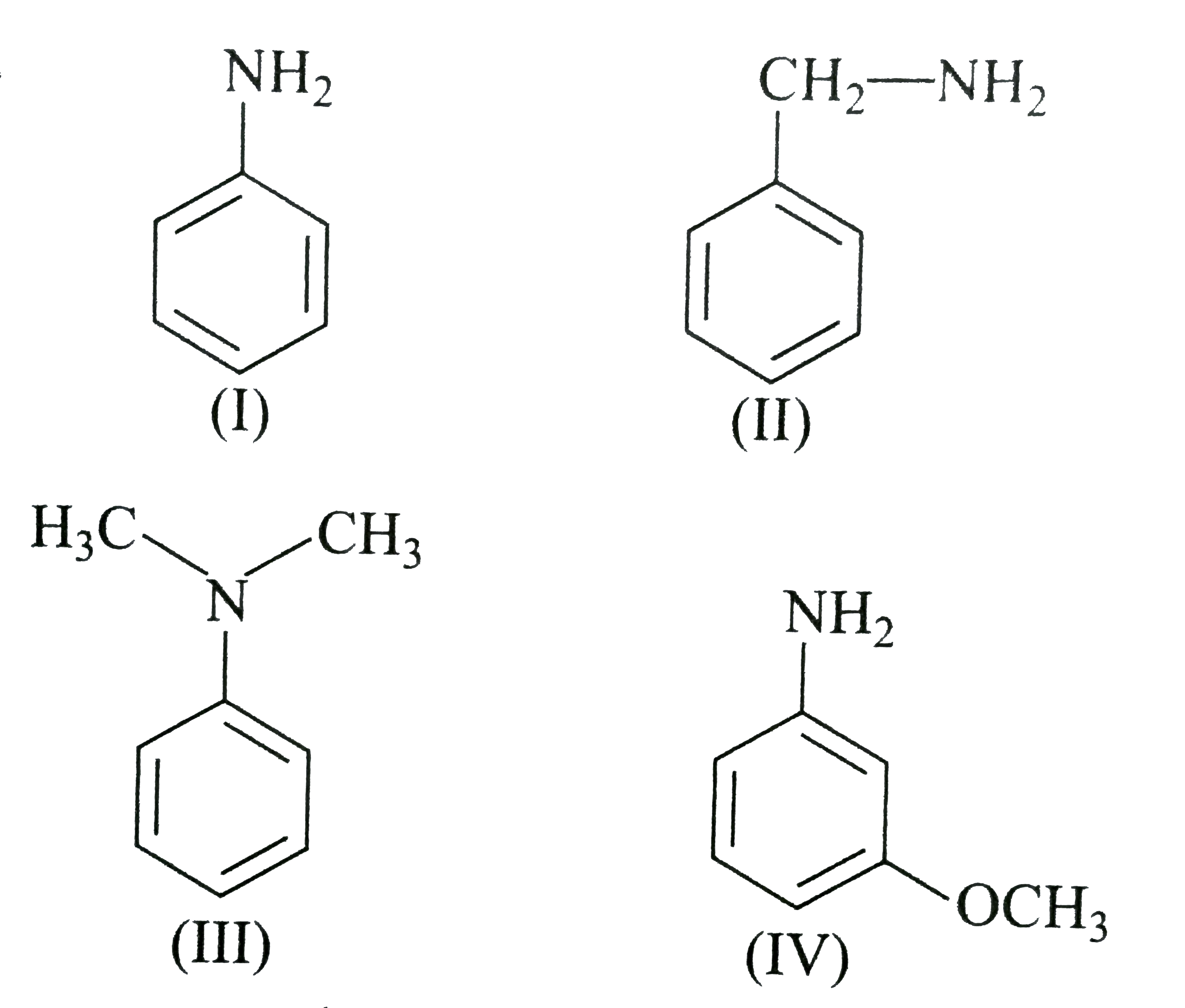The correct order of the basic strength of methyl substituted amines in aqueous solution is
CH3NH2>(CH2)2NH>(CH3)3N
(CH3)2NH>CH3NH2>(CH3)3N
(CH3)3N>CH3NH2>(CH3)2NH
(CH3)3N>(CH3)2NH>CH3NH2
The correct Answer is:B
To determine the correct order of basic strength of methyl-substituted amines in aqueous solution, we need to analyze the basicity of primary, secondary, and tertiary amines. Here’s a step-by-step solution:
Step 1: Understand Basicity
Basicity refers to the ability of a compound to accept protons (H⁺ ions). In the context of amines, basicity is influenced by the availability of the lone pair of electrons on the nitrogen atom to bond with protons.
Hint: Remember that the more available the lone pair is for bonding with protons, the stronger the base.
Step 2: Identify the Types of Amines
We have three types of methyl-substituted amines:
- Primary amine (CH₃NH₂): One methyl group attached to the nitrogen.
- Secondary amine (CH₃NHCH₃): Two methyl groups attached to the nitrogen.
- Tertiary amine (N(CH₃)₃): Three methyl groups attached to the nitrogen.
Hint: Recognize that the number of alkyl (methyl) groups affects the electron-donating ability.
Step 3: Analyze Electron Donating Effects
Alkyl groups are electron-donating due to the +I (inductive) effect. More alkyl groups increase the electron density on the nitrogen, enhancing its ability to accept protons.
Hint: More methyl groups mean stronger electron donation, but consider steric hindrance as well.
Step 4: Consider Steric Hindrance
Tertiary amines have three bulky methyl groups, which create steric hindrance. This steric hindrance can hinder the approach of protons to the nitrogen atom, reducing basicity.
Hint: Steric hindrance can limit the accessibility of the nitrogen lone pair to protons.
Step 5: Evaluate Solvation Effects
In aqueous solutions, solvation plays a crucial role. Primary amines can form more hydrogen bonds with water due to the presence of more hydrogen atoms available for bonding, which stabilizes the positive charge on nitrogen when it accepts a proton.
Hint: More hydrogen bonding with water enhances solvation and stabilizes the protonated form of the amine.
Step 6: Compare Basicity
Based on the above factors:
- Primary amine (CH₃NH₂): Least steric hindrance, better solvation, and good electron donation.
- Secondary amine (CH₃NHCH₃): Moderate steric hindrance and good electron donation.
- Tertiary amine (N(CH₃)₃): Highest steric hindrance, less solvation but good electron donation.
Thus, the order of basic strength in aqueous solution is:
Secondary amine > Primary amine > Tertiary amine
Final Answer
The correct order of basic strength of methyl-substituted amines in aqueous solution is:
Secondary amine > Primary amine > Tertiary amine
Basicity refers to the ability of a compound to accept protons (H⁺ ions). In the context of amines, basicity is influenced by the availability of the lone pair of electrons on the nitrogen atom to bond with protons.
We have three types of methyl-substituted amines:
- Primary amine (CH₃NH₂): One methyl group attached to the nitrogen.
- Secondary amine (CH₃NHCH₃): Two methyl groups attached to the nitrogen.
- Tertiary amine (N(CH₃)₃): Three methyl groups attached to the nitrogen.
Alkyl groups are electron-donating due to the +I (inductive) effect. More alkyl groups increase the electron density on the nitrogen, enhancing its ability to accept protons.
Tertiary amines have three bulky methyl groups, which create steric hindrance. This steric hindrance can hinder the approach of protons to the nitrogen atom, reducing basicity.
In aqueous solutions, solvation plays a crucial role. Primary amines can form more hydrogen bonds with water due to the presence of more hydrogen atoms available for bonding, which stabilizes the positive charge on nitrogen when it accepts a proton.
Based on the above factors:
- Primary amine (CH₃NH₂): Least steric hindrance, better solvation, and good electron donation.
- Secondary amine (CH₃NHCH₃): Moderate steric hindrance and good electron donation.
- Tertiary amine (N(CH₃)₃): Highest steric hindrance, less solvation but good electron donation.
Secondary amine > Primary amine > Tertiary amine
The correct order of basic strength of methyl-substituted amines in aqueous solution is:
Secondary amine > Primary amine > Tertiary amine
Similar Questions
Knowledge Check
The correct order of acidic strength is
AK2O>CaO>MgOBCO2>N2O5>SO3CNa2O>MgO>Al2O3DCl2O7>SO2>P4O10Write the order of basic strength :
 AQ>R>S>PBP>R>Q>SCR>P>S>QDP>Q>R>S
AQ>R>S>PBP>R>Q>SCR>P>S>QDP>Q>R>S
Correct order of basic strength is :
View SolutionThe correct order of acidic strength is
View SolutionThe correct order of acidic strength is :

View SolutionCorrect order of acidic strength

View SolutionThe correct order of acid strength is
View SolutionSelect the correct order of basic strength?
View Solution

